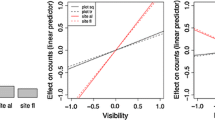Abstract
The study and conservation of biological diversity is one of the global contemporary environmental problems of world significance. The goal of the study is to propose a method for identifying promising plants based on iteration of average values. For this purpose, nine trial plots were laid in the steppe, forest-steppe, and mountain zones of the Northwestern Caucasus in protective and forest stands. Based on well-known methods, the height, trunk diameter, crown radius, abundance of fruiting, weight and selection value of nuts were studied. We studied the change in the average values of the indicators at different numbers of iterations. A method for identifying promising individuals based on the values of the average of iterations 4 and 5 was proposed. The proposed method was compared with the known method based on the values of the sum (difference) of the mean and double standard deviation. With a statistically normal distribution of indicators, the known and proposed methods give close values in the direction of increase or decrease in the indicator. Using the known method with a statistical distribution that differs from normal in some cases gives meaningless values. The proposed method based on the average value of iterations 4 and 5 in the direction of increase or decrease in the studied indicator allows one to use it to select objects with a statistical distribution that differs from normal.





Similar content being viewed by others
REFERENCES
Adamova, R.M., and Kaziev, M.-R.A., Ecological and biological aspects of formation of protective forest stands in arid regions, Arid Ecosyst., 2021, vol. 11, no. 2, pp. 135–140.
Agrolesomelioratsiya (Agroforestry), Ivanov, A.L. and Kulik, K.N, Eds., Volgograd: Vseross. Nauchno-Issled. Inst. Agrolesomelior., 2006, 5th ed.
Alimov, A.F., Altukhov, Yu.P., and Amirkhanov, A.M., Natsional’naya strategiya sokhraneniya bioraznoobraziya Rossii: Prinyata na Forume po sokhraneniyu zhivoi prirody Rossii (Moskva, iyun' 2001 g.) (National Strategy for Biodiversity Conservation of Russia: Adopted at the Russian Wildlife Conservation Forum (Moscow, June 2001)), Moscow: Proekt GEF “Sokhranenie Bioraznoobraziya”, 2001.
Belyaev, A.I., Kulik, K.N., Manaenkov, A.S., Metodicheskie rekomendatsii po fitomeliorativnoi rekonstruktsii degradirovannykh i opustynennykh pastbishch Rossiiskoi Federatsii innovatsionnymi ekologicheski bezopasnymi resursosberegayushchimi tekhnologiyami (Guidelines for Phytomeliorative Reconstruction of Degraded and Desert Pastures of the Russian Federation Using Innovative Environmentally Friendly Resource-Saving Technologies), Volgograd: Feder. Naucnhyi Tsentr Agroekologii Ross. Akad. Nauk, 2021.
Biganova, S.G., Sukhorukikh, Yu.I., and Pchikhachev, E.K., Software requirements for the perspective filbert genepool (hazelnut), Nov. Tekhnol., 2020, no. 2 (52), pp. 135–143.
Kryuchkov, S.N. and Mattis, G.Ya., Lesorazvedenie v zasushlivykh usloviyakh (Afforestation in Arid Conditions), Volgograd: Vseross. Nauchno-Issled. Inst. Agrolesomelior., 2014.
Kulik, A.K., Kulik, K.N., Vlasenko, M.V., Sukhorukikh, Yu.I., and Biganova, S.G., Water-regime formation in sands of the Archeda–Don massif with respect to the distribution of plant formations, Arid Ecosyst., 2021, vol. 11, no. 4, pp. 358–366.
Max, J., Methodes et techniques de traitement du signal et applications aux mesures physiques, Paris: MASSON, 1981, vol. 1.
Petrov, S.A., Metody opredeleniya i prakticheskoe ispol’zovanie koeffitsienta nasleduemosti v lesovodstve (Methods for Determining and Practical Use of the Heritability Coefficient in Forestry), Moscow: Tipografiya TsBNTI Leskhoza, 1973.
Planta Europa, European Strategy for Plant Conservation (2008–2014): A Sustainable Future for Europe, Salisbury, UK and Council of Europe, Strasbourg, 2008.
Roganov, E.A., Osnovy informatiki i programmirovaniya (Fundamentals of Informatics and Programming), Moscow: Mosk. Gos. Industrial. Univ., 2001.
Shamsutdinova, E.Z., Kosolapov, V.M., and Kenzhegaliev, G.K., The breeding of salt-tolerant variety of annual halophyte Suaeda altissima L. in the near Circum-Caspian semi-desert, S-kh. Nauka, 2017, no. 5, pp. 24–27.
Sukhorukikh, Yu.I., Izbrannye Trudy (Selected Works), vol. 2: Orekhoplodnye (Walnut), Maikop: OOO “Kachestvo”, 2008.
Sukhorukikh, Yu.I. and Biganova, S.G., Walnut selection for field-protective afforestation, Izv. Vyssh. Uchebn. Zaved., Sev.-Kavk. Reg., Estestv. Nauki, 2003, no. S12, pp. 60–63.
Terent’ev, P.V. and Rostova, N.S., Praktikum po biometrii (Biometrics Practical Couse), Leningrad: Leningradsk. Univ., 1977.
Tsarev, A.P., Pogiba, S.P., and Laur, N.V., Selektsiya lesnykh i dekorativnykh drevesnykh rastenii (Selection of Forest and Ornamental Woody Plants), Tsarev, A.P., Ed., Moscow: Mosk. Gos. Univ. Lesa, 2014.
Funding
The studies were carried out at the expense of the grant from the FSBEI HE “MSTU”, work code NP6-2023 and FRC SSC RAS, work code 0492-2021-0009.
Author information
Authors and Affiliations
Corresponding author
Ethics declarations
Conflict of interests. The authors declare that they have no conflicts of interest.
Additional information
Translated by L. A. Solovyova
Rights and permissions
About this article
Cite this article
Sukhorukikh, Y.I., Biganova, S.G. A Method of Iteration of Averages in Ecological Research. Arid Ecosyst 13, 342–347 (2023). https://doi.org/10.1134/S2079096123030149
Received:
Revised:
Accepted:
Published:
Issue Date:
DOI: https://doi.org/10.1134/S2079096123030149




